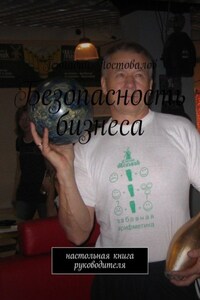Cover designer Margarita Kupreeva
© Maxim Filippovskiy, 2025
© Margarita Kupreeva, cover design, 2025
ISBN 978-5-0067-4684-8
Created with Ridero smart publishing system
Preface to the English Edition
The Dance of Infinity at the Threshold of Tomorrow
We stand at the threshold of an epoch that will fundamentally redefine human existence. The Singularity Era, or Technological Neo-Apocalypticon, is not merely a book – it is a manifesto for an age of exponential transformation, a compass for navigating the paradoxes of progress, and a call for conscious creation in an era where reality itself is being rewritten.
This work, born of a synthesis of rigorous interdisciplinary research, integrates the author’s pioneering General Theory of Economic Formation – a framework inspired by Marxian dialectics yet expanded through the lens of 21st-century technological and social evolution – with insights from the natural sciences, philosophy, cybernetics, and futurism. Within these pages, the dance of Singularity and Neo-Apocalypticon represents not a binary destiny, but dual forces shaping our collective future: the extraordinary potential of human-machine symbiosis and the sobering responsibility to mitigate civilizational-scale risks.
Why This Book Matters Now
As artificial intelligence, quantum computing, and bioengineering accelerate toward a horizon of radical discontinuity, humanity faces a pivotal choice: Shall we become architects of a new renaissance, or passive witnesses to our own obsolescence? This volume reframes the discourse by:
Transcending Hype and Dystopia: Rejecting both techno-utopian naïveté and apocalyptic fatalism, it delineates the five phases of Singularity – from contemporary techno-alchemy to post-anthropocentric synergies in deep time.
Global Integration: While technological breakthroughs emerge from hubs like Russia, the U.S., China, and the EU, their implications are planetary. This edition extends the dialogue beyond borders, urging innovation centers to serve as bridges rather than silos.
Navigational Frameworks: From neural symphonies and quantum ethics to regenerative landscapes and self-reflective AI, the text provides conceptual tools to harness disruption – not as a threat, but as raw material for sculpting a humane future.
This work distinguishes itself through its integration of:
Economic Foresight: The evolution of labor, capital, and production into fluid, neuron-driven ecosystems.
Scientific Anticipation: Explorations of quantum-energy networks, bio-cybernetic landscapes, and emergent “living factories”.
Philosophical Rigor: A critique of anthropocentrism in an age where machines dream, soil articulates, and information achieves sentience.
Cultural Poetics: Blending Russian literary richness with global urgency, it reconceives technology not as sterile mechanism, but as metaphysical force – a “dance of steel and consciousness”.
To the English-Speaking Reader
You hold more than a book; you hold an invitation to a planetary dialogue – one where Silicon Valley coders, Shenzhen engineers, Nairobi biofarmers, and all policymakers must collaborate to ensure the coming wave of transformation elevates all humanity. The Singularity is no distant abstraction; it resonates in every algorithm, genomic edit, and solar-powered blockchain. Its outcome hinges on whether we wield these tools with wisdom or hubris.
As the author asserts:
“Technology is not the master – it is the gardener in the eternal dance of life. Our imperative is to ensure it tends the roots, not merely the stars.”
This metaphor encapsulates the treatise’s ethos. It speaks to the critical equilibrium we must maintain: while reaching for the stellar potential of AI, quantum leaps, and bio-engineering, we must nurture the foundational human and ecological substrates – the “roots” – that sustain meaning, equity, and life itself. Shall we chase distant constellations, or cultivate the shared soil beneath our feet?
This English edition, meticulously rendered and translated by DeepSeek AI yet profoundly human in its vision and purpose, serves as your essential compass for navigating this grand dance. It offers not predictions but pathways; not dogma but dialectic. It equips you to engage critically with forces reshaping existence – from neural symphonies to self-aware manufactories, from quantum ethics to planetary consciousness.
Remember: The future remains unwritten. It is being composed – line by line, algorithm by algorithm, choice by choice – by those audacious enough to envision it first and wise enough to build it with care.
May this volume ignite your imagination, sharpen your foresight, and empower you to join the pivotal discourse of our age: forging a Singularity that elevates all life – not merely technology.
This volume before you is not merely a book – it is a manifesto of the epoch, a call to conscious creation of the future. Its title, The Era of Singularity or The Technological Neoapocalypticon, is profoundly symbolic. It signifies not a fatal fork in the road, but the paramount challenge of our time: which path of creation shall we choose? On one hand lies the dazzling potential of technological singularity, opening gates to digital flourishing and unprecedented longevity, albeit demanding a wise navigation through zones of unpredictability. On the other hand, the “Technological Neoapocalypticon” emerges not as a prophecy of collapse, but as a crucial revelation: it is systematized knowledge about the risks created by our own genius (AI, nanorobots, bioengineering). This book is not a “Bible of Doom,” but a reminder and a vulnerability map, indicating where exceptional responsibility is required. The choice is not between “paradise or perdition,” but between conscious creation and irresponsible risk. The very “or” in the title is not a cry of fear, but a powerful call for vigilance, dialogue, and collaborative design of a future worthy of human genius.








